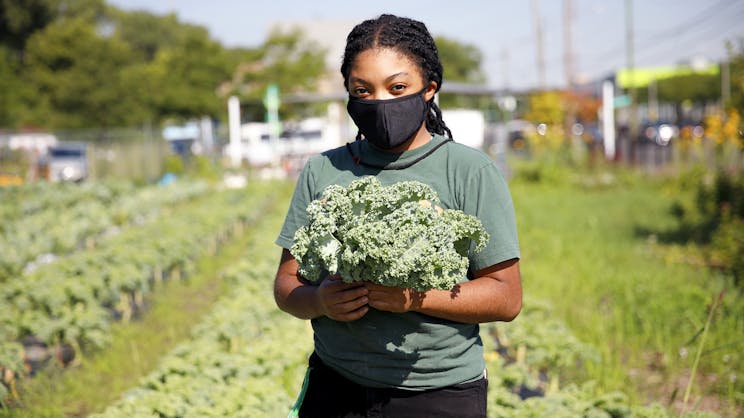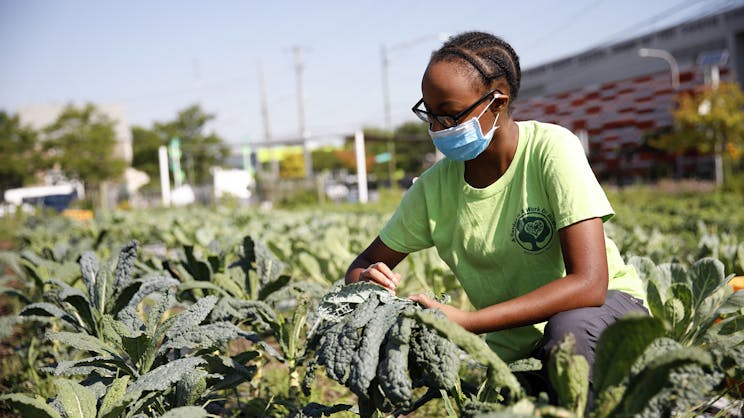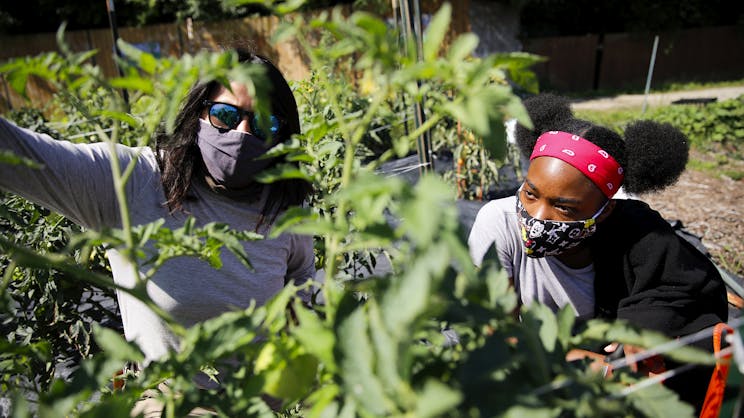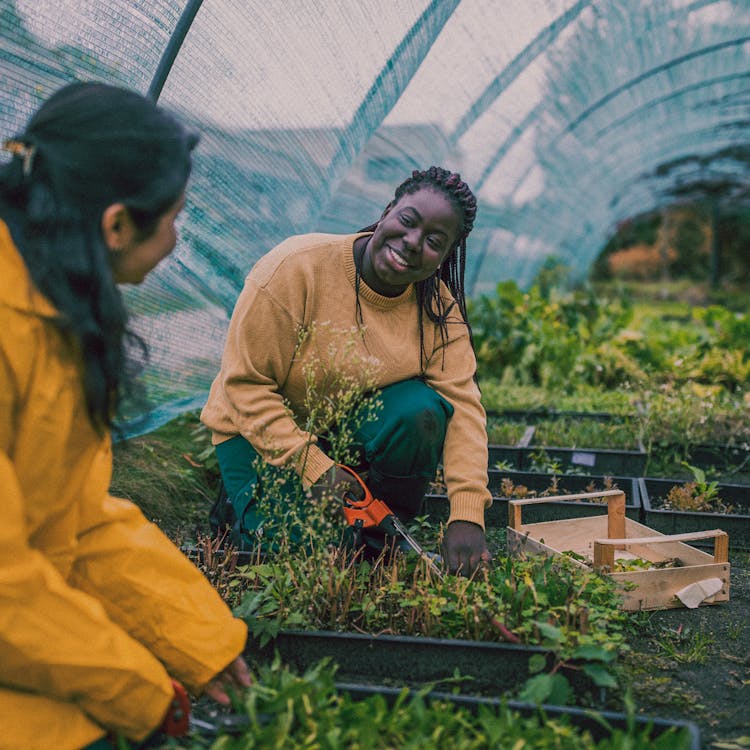
“Producing Pathways” to Careers in Sustainable Food and Agriculture
At Gary Comer Youth Center (GCYC) on Chicago’s South Side, teenagers and young adults are making kale and cheese scones, hand-sculpted granola bars made with honey from their on-site bee farm, and lavender tea. Their talents are honed through their participation in GCYC’s “Producing Pathways in Greater Grand Crossing Program,” which prepares students ages 16-24 to succeed in careers in STEAM (science, technology, engineering, arts and math), including gaining skills to specialize in sustainability, alleviate food insecurity and improve health outcomes for local communities.

A student in the "Producing Pathways" program. Credit: Comer Education Campus | © 2020, Jasmin Shah

Students grow a range of produce on GCYC's farm. Credit: Comer Education Campus | © 2017 Jasmin Shah

Students and their work at "Producing Pathways." Credit: Comer Education Campus | © 2020 Jasmin Shah

"Producing Pathways" helps prepare students. Credit: Comer Education Campus © 2020 Jasmin Shah

Students sell produce at their farmer's market. Credit: Comer Education Campus | © 2021, Jasmin Shah
“Marginalized and food insecure communities need options for healthy food at a cheap price point.”
— Olu Olaleye
This goal – preparing the next generation to create solutions for food and health disparities is prescient. Before the COVID-19 pandemic, 9.3 percent of Cook County residents struggled to buy food, according to data from the Greater Chicago Food Depository. Since the pandemic, the hunger crisis has dramatically increased to roughly 12 percent of Cook County residents facing food insecurity in 2021.
“I think the students realize that by planting a seed, they can change their environment because they can grow their food and control their food supply,” said Marjorie Hess, a horticulturist and educator who developed and runs the Producing Pathways program and also directs GCYC’s urban agriculture program.
The over 150 students enrolled in Producing Pathways have a year-round urban agriculture and culinary curriculum located on GCYC’s campus, a remediated brownfield transformed into 1.75-acre urban farm. Other growing spaces include the campus’ 8,600 square foot rooftop garden and 100 earth boxes where students grow, harvest and prepare roughly 15,000 pounds of produce each year. An orchard bearing a variety of fruit and two hoop houses also live there.
Hess said GCYC was intentional about creating a “snack food garden” in which sunflowers are grown to harvest seeds and potatoes for homemade chips and other produce on the center’s rooftop garden. It’s where students can begin to connect the dots between where their food begins and all the steps until they eat it.
Producing Pathways entices students to learn more about the science behind how their food grows and pursue careers in related fields, Hess said. Blending the seed-to-table food system into the high school’s STEAM classes furthers their connection to agriculture, the environment and food.
Their exploration into careers in food and agriculture is also encouraged by internships and externships (for older students) with local businesses and organizations, including Illinois Restaurant Association, Windy City Harvest and the Chicago Park District.
Much of the food the students grow and prepare into snacks and meals, are sold at their twice-a-week farmers market and donated to local food pantries and social service agencies.
Eighty percent of the food remains in the community.
GCYC alumnus Oluwaseyi “Olu” Olaleye, a recent graduate of Stanford University, returned to Chicago and now works at GCYC.
Olaleye works with students who assist him as he grows his vertical farming and hydroponic business centered around his passion for sustainable agriculture and addressing food insecurity. Olaleye plans to saturate the market with healthy produce - specifically leafy greens - grown more efficiently in greater numbers to feed more people at prices they can afford.
“Marginalized and food insecure communities need options for healthy food at a cheap price point,” he said. “If, in my neighborhood of South Shore, a bag of spinach is $8 and a family can spend that same $8 to feed themselves with multiple fast-food meals what do you think they will choose?” Olaleye said. “It’s economics.”
Olaleye’s impact-driven business is a manifestation of Producing Pathway’s goal: young people harnessing skills they’ve learned to tackle large-scale problems in their communities and the world.
Still, there’s many more steps along Pathway’s mission. Growing enrollment, expanding programming and generating more job opportunities for students and graduates. That’s the path to ensuring the next generation and their communities have agency over their health and access to affordable, nutritious food.





